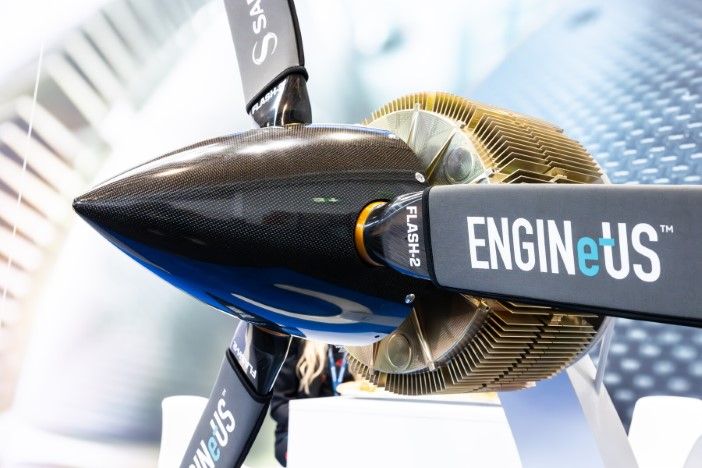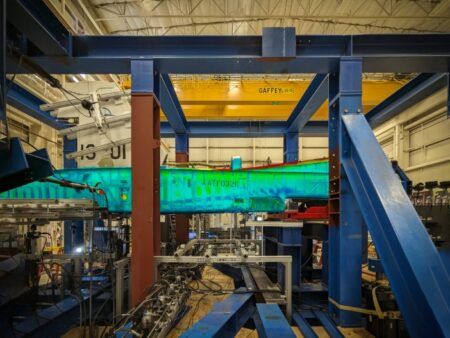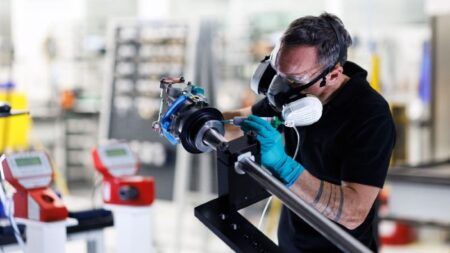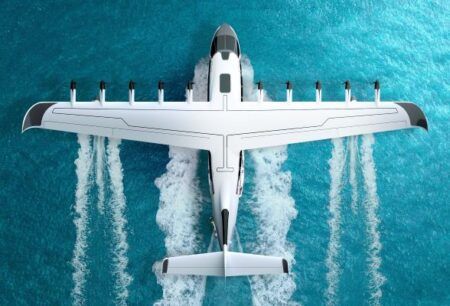The European Union Aviation Safety Agency has certified Safran’s Engineus 100 electric motor as an engine that complies with Special Condition SC E-19, the world’s first Special Condition for electric and / or hybrid aircraft propulsion systems.
The first aircraft to use the Engineus will be Diamond Aircraft Industries eDA40, an all-electric training aircraft.
The motor obtained certification after a campaign involving 1,500 hours of motor certification tests and more than 100 flight hours. Work on the motor with the European Union Aviation Safety Agency (EASA) started eight years ago when including the defining of the specific airworthiness rules for electric propulsion and the design of the right methods to properly assess and certify it.
The Engineus 100 electric motor features power and control electronics directly integrated into the motor and an air cooling system. It delivers a maximum power of 125kW, with a weight-to-power ratio of 5kW/kg.
Safran plans to produce more than 1,000 Engineus motors a year by 2026, using four semi-automated production lines in Niort, France and Pitstone, UK. The lines will be equipped with space to increase production.
The initial B1 model which has been certified is suitable for installation on two-seater light aircraft. The aim is to extend the series to a greater power range of 89 KW to 180 KW, a baseline that would allow for wider applications in up to 19-seater regional transport aircraft.
According to Safran, the motor could also be used for the electric hybridization of future generations of commercial aircraft engines, capable of carrying 150 passengers.
Aircraft developers using the Safran motor also include Aura Aero, Bye Aerospace, CAE, Electra, TCab Tech, and VoltAero. The certification of the Engnieus 100 is a major milestone towards the production and market launch of the first aircraft.
“We have just witnessed a key moment in the history of aviation. By obtaining certification for the Engineus 100 electric motor, Safran has achieved a world first. This event represents an immense source of pride”, said Bruno Bellanger, CEO of Safran Electrical and Power.
“This was a fascinating project for EASA, and the first test of our Special Condition designed for the certification of hybrid and all-electric propulsion,” said Rachel Daeschler, EASA’s certification director. “We are fully committed to supporting the development and certification of propulsion technologies aimed at decarbonizing aviation. We congratulate Safran for this key achievement, which is paving the way for the electrification of aviation, for small airplanes and beyond.”
Definition and certification process
EASA initiated discussions on regulations for innovative propulsion systems in 2017 when requests for the type certification of novel designs for general aviation and vertical take-off and landing (VTOL) aircraft first started coming to the agency.
Specifications for conventional thermal engines were originally developed decades ago and could not be used to directly certify and electric engine
EASA developed a Special Condition (SC) to allow for the certification of innovative propulsion systems using a performance-based requirement applicable to both aircraft and engine certification applications, so as to guarantee consistency from the outset.
SC E-19 for the certification of hybrid and/or electric propulsion was published in April 2021. It was then implemented as the certification standard for VTOL applications and to the first propulsion-type certificate application from Safran Electrical & Power.
In this case, the engine design had several novelties that entailed developing new means of compliance. For example, new power modules and the integration of the power electronics directly into an air-cooled engine. Safran Electrical & Power designed tests to demonstrate the safety of the Engineus.
“As anexample, the minimization of fire risk had to be rethought in its entirety,” said Régis Rossotto, project manager from EASA. “In contrast to the combustion engine for which the risk of fire arises from the ignition of flammable fluids, in an electric engine, that risk comes from the use of high voltage and electrical arcing. A worst-case scenario was defined and tested, and mitigations were put in place to allow a pilot to land safely if such a scenario arose.”
Such topics required close collaboration with EASA flight test and powerplant experts and the first customer Diamon Aircraft. As a result of this strong cooperation, the certification of the Engineus 100 B1 required a similar time investment as for a rotorcraft turboshaft engine, less than two years. In parallel to the engine certification, the engine racked up more than 100 flight hours on prototype aircraft.





